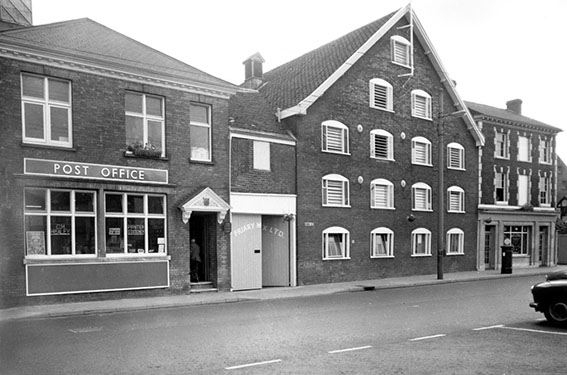- Screen Colours:
- Normal
- Black & Yellow
And now, from our New Zealand correspondent…
One of the Luftwaffe’s rare bright spots in the Battle of Britain was on August 15, 1940, when twenty-five fighter bombers (almost certainly Dorniers) attacked RAF Martlesham Heath causing severe damage to a fighter airfield.
I was six and living at Hadleigh – and a bit envious about being away from the action. That feeling was not to last. Decently sandbagged and window-taped, we had seen a lot less warfare than Ipswich. (My Nanna and three aunts were bombed out of Cemetery Road and were living with us, including Joyce (8), now the wife of Neil Salmon, your former editor.)
Some months after Martlesham the bizarre attack on Hadleigh took place. My pals and I were kicking a ball around on the street when an enormous clanking sound occurred. It was a very low-flying Dornier obviously crippled and trying to make it back to the Hook of Holland. The nose gunner (either a father of boys or a fan of amateur football) was machine-gunning in a fairly arbitrary fashion but ceased as soon as he spotted us. We didn’t get off entirely. His comrades jettisoned racks of incendiaries, scoring direct hits on the Station Road allotments, whose blasts threw some of us into neighbours front lawns and set tiles and windows flying. My Aunt Rose’s almost last words were: ‘Look! They’re only practicing’. Nanna Welton dived for the protection of the indoor shelter, a ‘Morrison’, only to be knocked over by the dog who got there first.
The sole Hadleigh casualties were the Old Mill, marginally, and a Mrs Hall who lived – and died – next to it.

My Aunt Rose is key to this saga. Very elderly Ipswichians will remember her, after hostilities, as co-owner with her husband Charlie Healey of two sub-post offices in Fore Street: one near the municipal baths, the other down on the other side close to Fore Hamlet. Rose had married Charlie, an RAF Warrant Officer from Plymouth, in 1931 or 1932.
They ‘borrowed’ me, aged about 3, in 1937 for a couple of weeks in married quarters at RAF Digby in Lincolnshire. Charlie showed me the latest prototype of the Spitfire, gleaming silver and converted from a seaplane, in a hangar. I’m pretty sure it was my earliest memory of anything. The aircraft was a thing of sublime beauty – like a perky robust seagull. It, with the Hurricane, radar and anti-aircraft ground fire, was to save us as a nation. I shall think of that Spitfire until I die.
Charlie finished the war as a Squadron Leader (engineer). He died suddenly in the night in 1961 at Halliwell Road, Lattice Barn. When Rose went to open Fore Street next morning – the show must go on – she learned that their workmate Bill Bailey, who had gone through training and the whole war with Charlie, had died in Belstead Road, I think, at the same hour.
Rose went on into her nineties and died in Halliwell Road. My mother, her sister, got to 99: the oldest Girl Guide (Lone Grey) in the world. With her at the end was Joyce Salmon, her 1939 London evacuee, of Warrington Road.
Bernard Brown (Auckland, N.Z.)